The Toughest Defensive Play Your Pitcher Will Face and How to Defend It
Your number one pitcher gets their number three hitter to roll over a 2-1 change up in a critical situation late in the game. He won the at bat. Then your pitcher and 1st baseman stare at each other as the ball dribbles between them, the runner is safe, and the inning continues.
This mishap is avoidable, but only if it is simulated and worked on in practice. The standard PFP (pitcher’s fielding practice) routine consists of pitcher’s covering first base, turing 1-6-3 double plays, fielding bunts to first base, and third base, and defending squeeze bunts. Most of the time this takes place with no runner.
Here is a great drill for the intermediate performance phase of developing PFPs:
The often overlooked play is the “tweener” between the pitcher and first baseman. Sometimes it is just overlooked, but it is also difficult to coach. I ignored this play for several years as a young coach because I simply didn’t know how to coach it.
The definition of a “tweener” is a slow ground ball that will get past the pitcher to his left, and is to the first baseman’s right, but is not hit hard enough to get to the 2nd baseman. This softly hit ball often causes mass chaos on the field.
Here is the best method I have found for the slow roller ground ball that goes between the pitcher and the first baseman:
The Pitcher's Role
The pitcher runs to first base like he is covering it on a ground ball to the first baseman. If he can pick the ball up directly on his way, at his covering first base speed, he picks it up, runs directly to first base, and steps on the bag. He cannot deviate backward from his path or the whole play breaks down.
If the pitcher can’t get the ball directly on his way to first base, or if he needs to slow down to field the ball, he lets it go and sprints directly to first base, and sets up to receive the flip from the first baseman.
If he needs to go in (toward the plate) to get the ball, he yells “BALL, BALL, BALL!” letting the first baseman know he needs to get back to the base.
The First Baseman's Role
The first baseman attacks the baseball like the pitcher isn’t there, and if the pitcher picks up the ball on his way to first base, enjoy watching the 1U. If the pitcher bypasses the ball, the first baseman should field it and deliver an underhand flip to the pitcher who is covering first base. It is likely he will need to take a shuffle or two (click his heels together)
If the pitcher has to move in to field the ball and calls “BALL, BALL, BALL,” the first baseman has to retreat to the bag calling "BASE, BASE, BASE!" This lets the pitcher know the first baseman will be retreating to the base.
The Second Baseman’s Role
The second baseman attacks the ball like he will field it. If the play is executed correctly, the second baseman will likely have nothing to do. In the event ball gets through the pitcher and first baseman, the second baseman should field it and flip it to the pitcher covering first base.
The difficult play for a second baseman, in this situation, is if the pitcher has to come toward home plate to field the ball. The second baseman should break to first base and be ready to cover it in the event that the first baseman can’t get there, or doesn’t react properly to his responsibility.
To help ensure your players will be able to execute this play in games, they have to see it in practice and they have to go through all of the stages of tactical development.
The biggest challenge will be on the footwork around the bag, so seeing this without a runner first will be helpful, but make sure to include it randomly in your PFP with a runner coming down the line. As with anything else defensively, adding a runner, creates a whole new set of problems, so it is important that players see this during practice.
Here is a great drill for the intermediate performance phase of developing PFPs:
More from my site
 Mini – Catcher Responsibilities During Bullpens
Mini – Catcher Responsibilities During Bullpens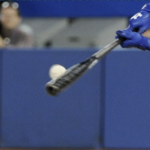 CCA Podcast 253 – The three things that matter for hitters
CCA Podcast 253 – The three things that matter for hitters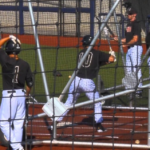 CCA Podcast 086 -Our in season hitting program
CCA Podcast 086 -Our in season hitting program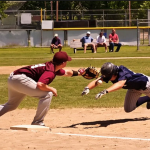 CCA Podcast 010: Controlling the Running Game
CCA Podcast 010: Controlling the Running Game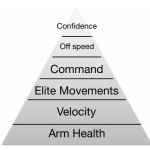 CCA Podcast 228 – Pitching Pyramid – Elite Movements and Arm Health
CCA Podcast 228 – Pitching Pyramid – Elite Movements and Arm Health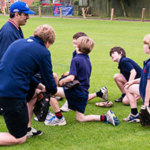 CCA Podcast 171 – Running youth practices
CCA Podcast 171 – Running youth practices
 Posted by Kyle Nelson
Posted by Kyle Nelson- Posted in Uncategorized
 Dec, 16, 2013
Dec, 16, 2013 1 Comment.
1 Comment.
Elite members login here
Check out what’s New/Hot!
Recognizing, Diagnosing, and Fixing Common Hitting Flaws eCourse The 3 metrics we tested on Blast motion sensors this year Sneak Peek Inside an Elite Q and A The batting practice continuum Elite Member’s area table of contents 50+ “Chaos” hitting drills
5 sample Chaos hitting drills FREE
Mental Skills and Culture Building The hitting pyramid Welcome Elite Member, Trey! Ideas for a pitcher first practice 12 week bat speed improvement plan Make plans this offseason to have your team playing their best baseball at the end of the year” Top 5 hitting drills to translate practice skill to game performanceHow we used Blast Motion sensors with a team in 2019
What to do if your hitters are overmatched Welcome Elite Member, Tommy! Setting your baserunners up for success Welcome Elite Member, Mike! A consulting call with Elite Member Matt FREE Web Clinic: Developing Athletic, Consistent, Extraordinary Infielders
 Coach Kyle Nelson
Coach Kyle Nelson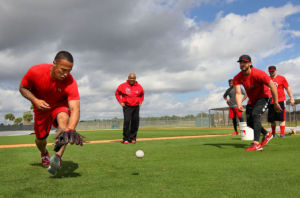
great info….we’ll definitely be practicing this drill.